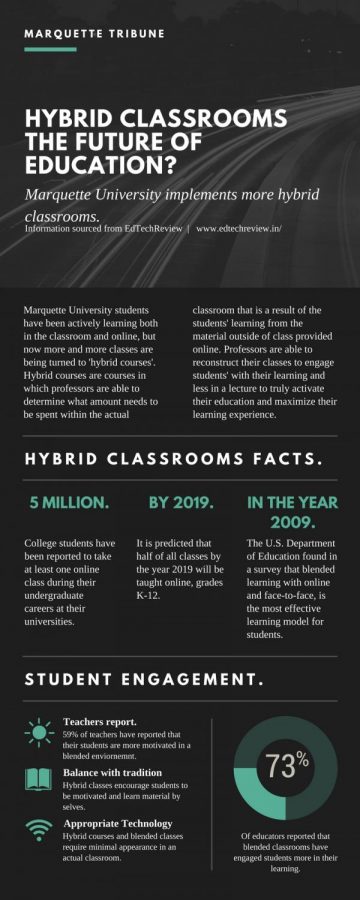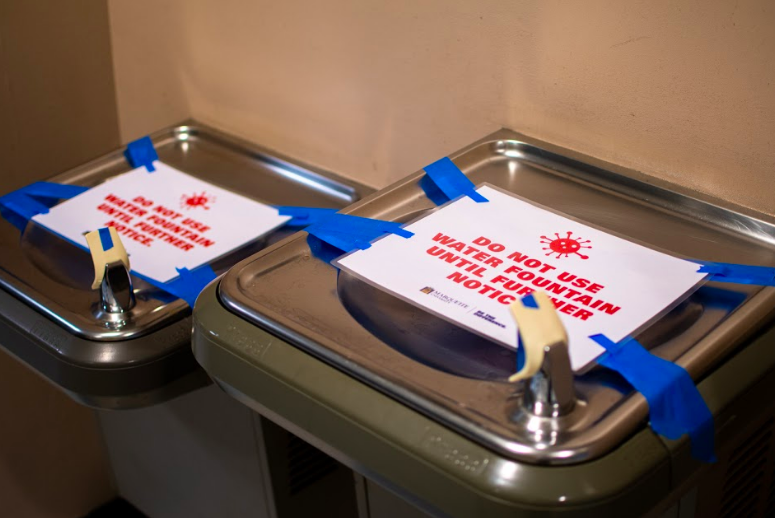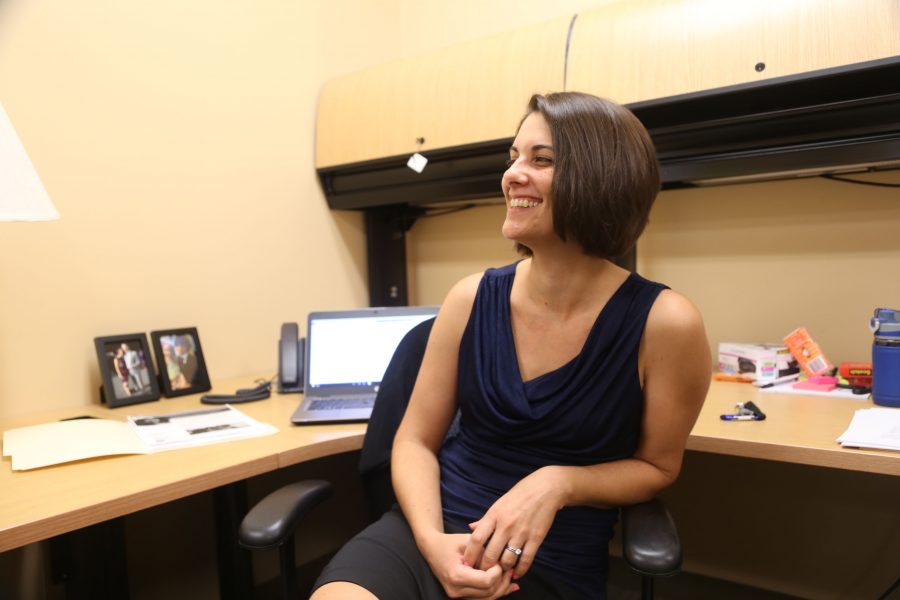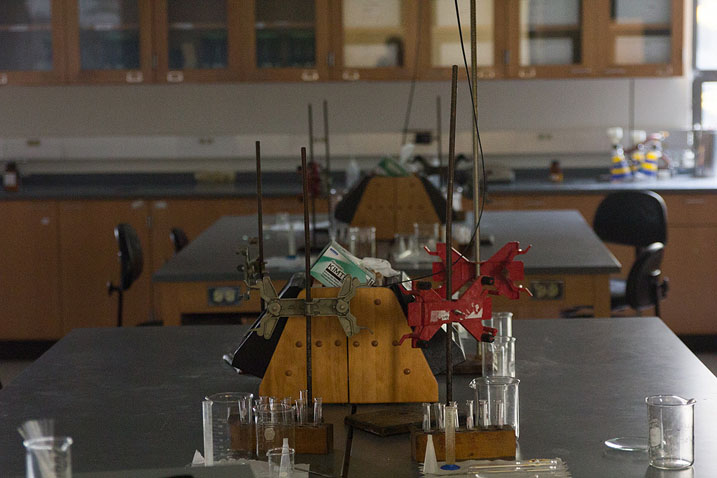After 19 years of teaching Spanish literature and culture in a traditional classroom, Eugenia Afinoguenova incorporated a hybrid class in her spring 2018 schedule.
A hybrid class is a course that exchanges face-to-face lecture time with learning materials online, with minimal in class meetings.
“I’ve been thinking about this for a long time. I know that a lot of our busiest students really like online classes,” Afinoguenova said.
Afinoguenova said she wanted to meet the demands of students while ensuring quality and efficient language learning.
Maria Pares-Toral, the director of online pedagogy and e-learning production, said there has been a recent increase of hybrid and flipped classrooms at Marquette.
“It’s definitely something that is being embraced by faculty and education in general. I definitely see a bigger shift toward that,” Pares-Toral said. “I wouldn’t say it would substitute face-to-face classrooms, but there will definitely be a growth in hybrid (classes).”
Pares-Toral said in hybrid classrooms, face-to-face and online learning come together to equally engage the students’ learning objectives. Professors are able to decide which components go online and which stay in the classroom.
“A lot of times we are able to move components of the class that can be self-based or where students can benefit doing something on their own,” Pares-Toral said. “It takes advantage of the best of both worlds for what the online class has to offer, and then the face-to-face, and then mixing them to maximize the student’s experience.”
In 2017, nine out of 10 schools using hybrid learning had higher scores on standardized tests compared to traditional classrooms, according to an article from The Journal: Technological Horizons in Education.
Marti Pirkola, a junior in the College of Health Sciences, however, said she prefers a face-to-face lecture.
“It sticks more. You aren’t forced to learn, and someone is explaining it to me,” Pirkola said.
Pirkola said she didn’t know Afinoguenova’s class was a hybrid course.
“I would have liked to have known it was going to be a hybrid class when I signed up,” Pirkola said. “That would have been helpful.”
Pirkola said she does find qualities in Afinoguenova’s hybrid class she enjoys. “The extra time to do the assignments and not rush and work at your own pace are the best parts so far.”
Afinoguenova’s class will meet 25 percent of the structured time this semester, with the rest being done online through emails, discussions and videos.
“I want to transform ‘teaching information delivery system’ to ‘active learning system,’” Afinoguenova said. “It’s less of telling students what to do, but more so guiding them.”
Pares-Toral said hybrid courses are not just for language-based classes. More and more, faculty members at Marquette University are integrating face-to-face lectures into hybrid courses and even flipped classrooms, courses that use scheduled lecture time to use the skills and material learned online.
Pares-Toral said a student should not feel that they are experiencing two different classes.
“The components that are online and the components that are in the classroom should blend,” Pares-Toral said.
Pares-Toral said the goal for any classroom, whether it is face-to-face, online, flip or hybrid, is to help develop the students’ skills and demonstrate the knowledge they need to know by the end of the course.
In the future, Afinoguenova said she thinks there is potential for the growth of hybrid classes. “I do not see it as black and white. There is potential, and I do appreciate the active learning part.”






